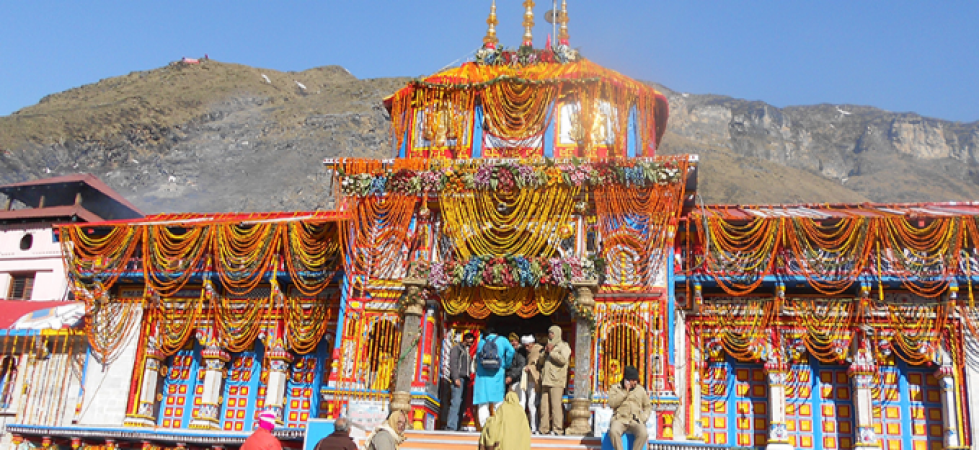
Badrinath Temple, located in the picturesque state of Uttarakhand, India, is one of the holiest and most revered pilgrimage sites in Hinduism. Nestled amidst the breathtaking Himalayan range, this ancient temple holds immense significance in the hearts of millions of devotees who visit it every year. With a rich historical legacy dating back several centuries, the temple attracts pilgrims from all corners of the globe. In this article, we will embark on a journey through the history of Badrinath and explore the rituals and practices involved in worshiping at this revered temple.
Historical Background:
The origins of Badrinath can be traced back to ancient Hindu scriptures, including the Skanda Purana and the Mahabharata. According to mythology, Lord Vishnu, the preserver of the universe, conducted severe penance at the site where the temple stands today. It is believed that the great sage Narada, impressed by Vishnu's devotion, named the area "Badri Van" (forest of berries) due to the abundance of wild berries found there.
The temple's historical significance is also attributed to Adi Shankaracharya, the renowned philosopher-saint who played a crucial role in the revival of Hinduism during the 8th century. Adi Shankaracharya established the Badrinath Temple as one of the four sacred "Char Dham" pilgrimage sites, with the others being Dwarka, Puri, and Rameshwaram. This initiative aimed to promote spiritual unity and provide a comprehensive pilgrimage experience to devotees across India.
Architecture and Iconography:
The Badrinath Temple is an architectural marvel that reflects the influence of both Dravidian and Nagara architectural styles. Constructed using stone and wood, the temple features intricate carvings, ornate pillars, and a vibrant exterior. The shrine is dedicated to Lord Badrinarayan, a form of Lord Vishnu depicted in a meditative pose, known as the "Badrivishal" image.
The deity is adorned with elaborate jewelry and garments, and the temple sanctum exudes an aura of divine spirituality. The presence of other deities, such as Lord Narasimha and Kuber, adds to the religious significance of the temple complex. The sacred river Alaknanda flows nearby, further enhancing the spiritual ambiance of the site.
Pilgrimage and Worship Rituals:
Badrinath attracts devotees from all walks of life who undertake the arduous journey to seek blessings and spiritual solace. The temple is open for six months each year, from April to November, due to the harsh Himalayan winters. During this period, the temple witnesses a significant influx of pilgrims.
The pilgrimage to Badrinath involves various rituals and practices that devotees follow with utmost devotion. The day typically begins with a holy dip in the Tapt Kund, a natural thermal spring known for its medicinal properties. Afterward, pilgrims proceed to the temple, where they offer prayers and perform puja (worship) rituals.
Devotees can also participate in the "Charan Paduka" trek, a trail that leads to a rock formation resembling Lord Vishnu's footprints. It is believed that Lord Vishnu stepped on this rock during his penance at Badrinath. The trek offers breathtaking views of the surrounding Himalayas, adding to the spiritual experience.
The temple priests conduct elaborate rituals, including "Abhishek" (ritual bath of the deity) and "Aarti" (ritual worship with lamps and incense), accompanied by devotional hymns and chants. These rituals create an atmosphere of divine energy, leaving pilgrims mesmerized by the spiritual vibrations.
Significance of Badrinath:
Badrinath Temple holds immense religious significance in Hindu mythology and philosophy. It is believed that worshiping at this sacred site absolves devotees of their sins and paves the way for spiritual liberation. The temple is also associated with the concept of "Moksha" (liberation from the cycle of birth and death), which is the ultimate goal of human existence in Hinduism.
The temple's location amidst the serene Himalayas enhances its significance, as it is believed to be situated at the confluence of the earthly and celestial realms. The natural beauty surrounding the temple serves as a constant reminder of the divine splendor and power of Lord Vishnu.
Badrinath Temple stands as a testament to the enduring faith and devotion of millions of devotees who embark on a spiritual journey to this sacred site. Its historical significance, architectural beauty, and religious rituals make it an iconic pilgrimage destination. Worshipping at Badrinath is not merely a religious practice but also a transformative experience that connects individuals with their spiritual selves.
Know about the roots of the ancient religion of India
Gomateshwara Temple: Monolithic Statues
The Significance of Bells in Temples: Unveiling Their Musical Charm